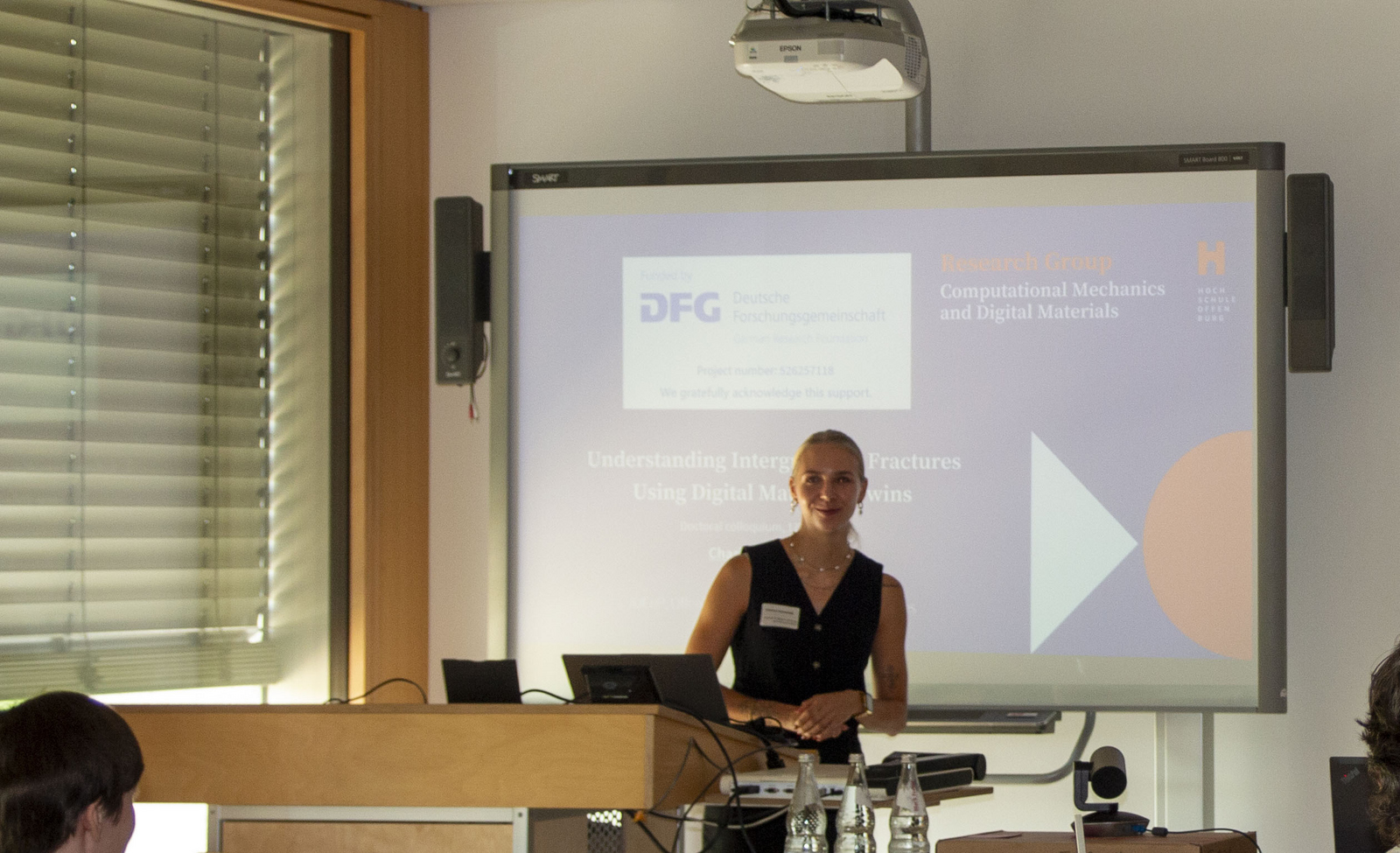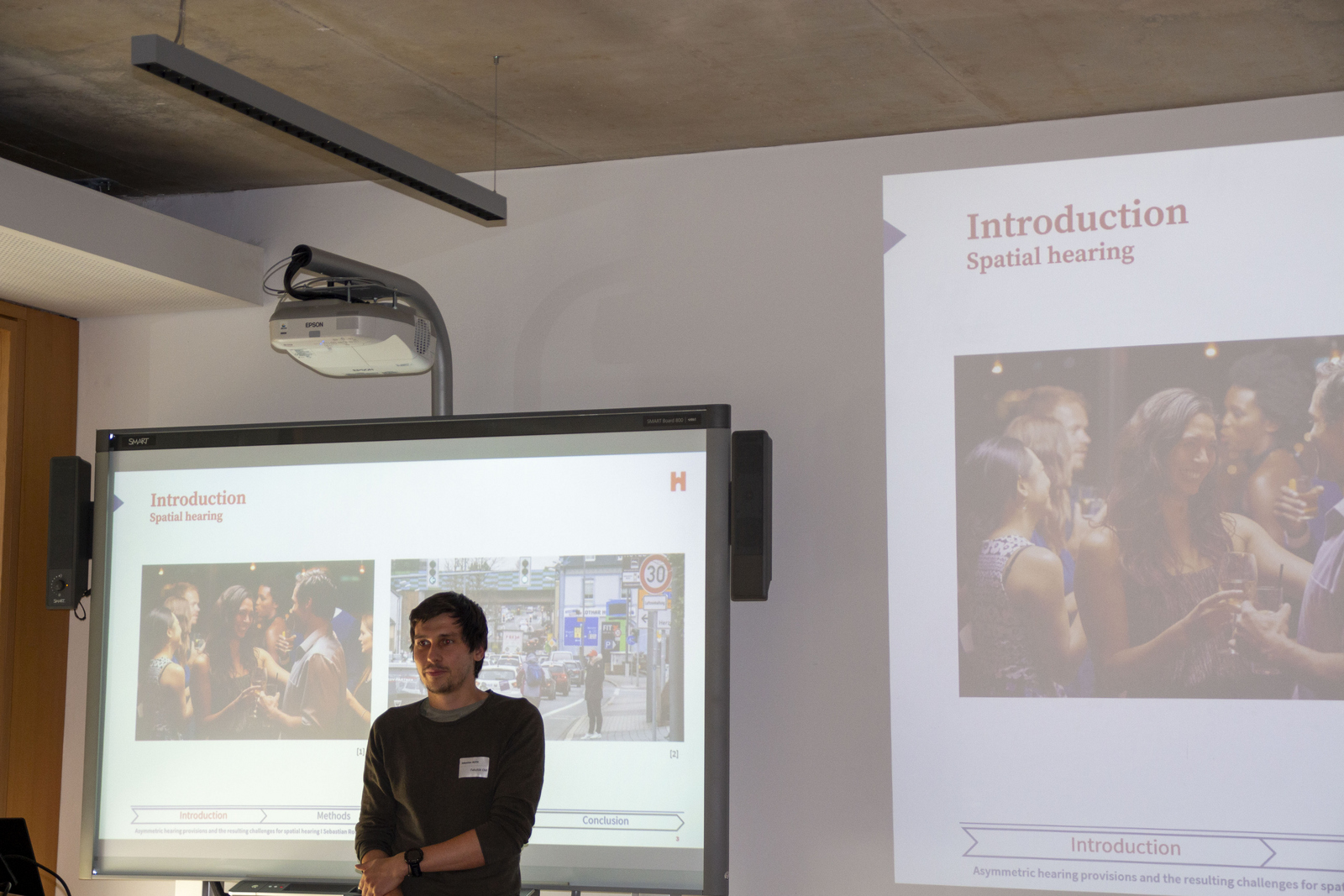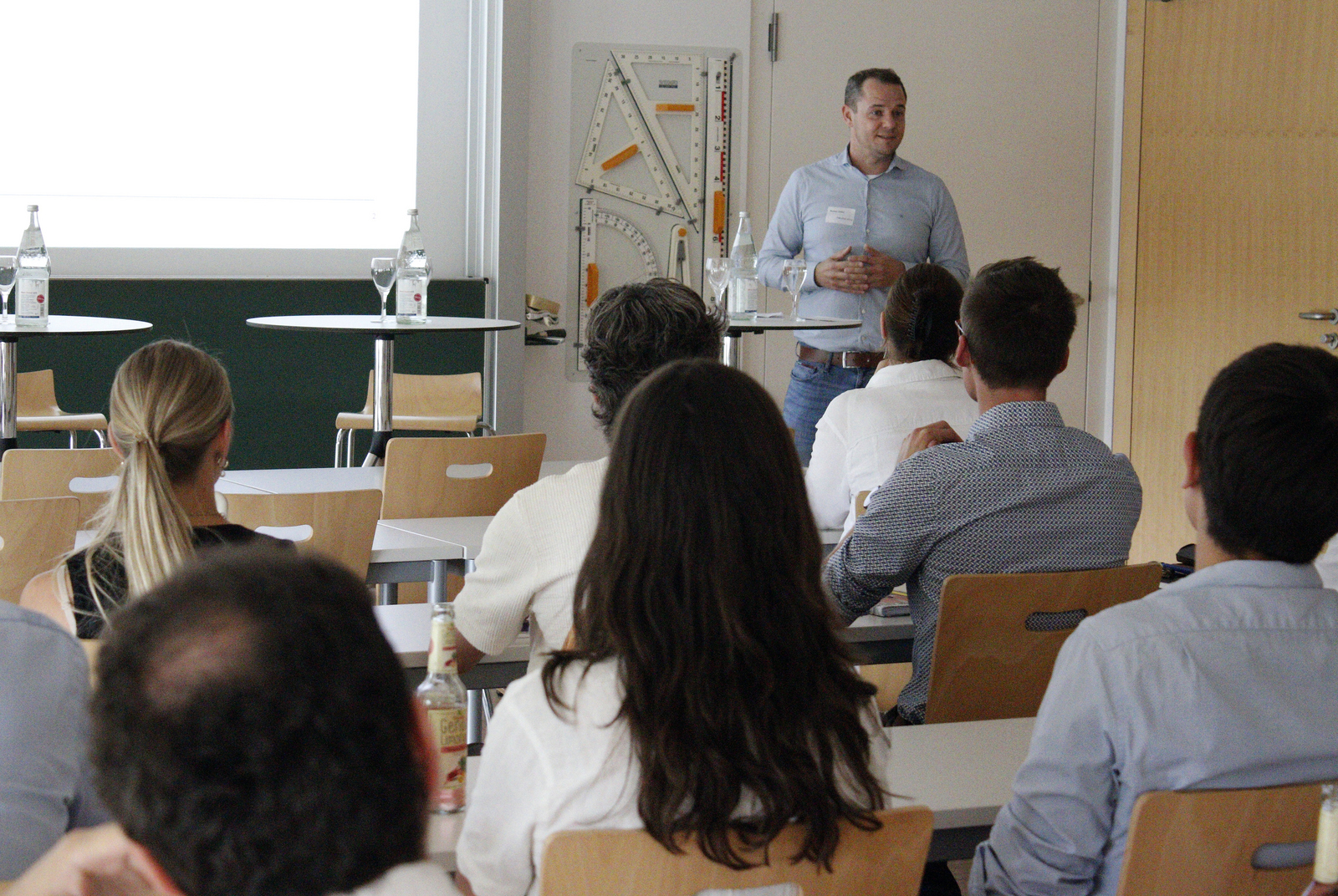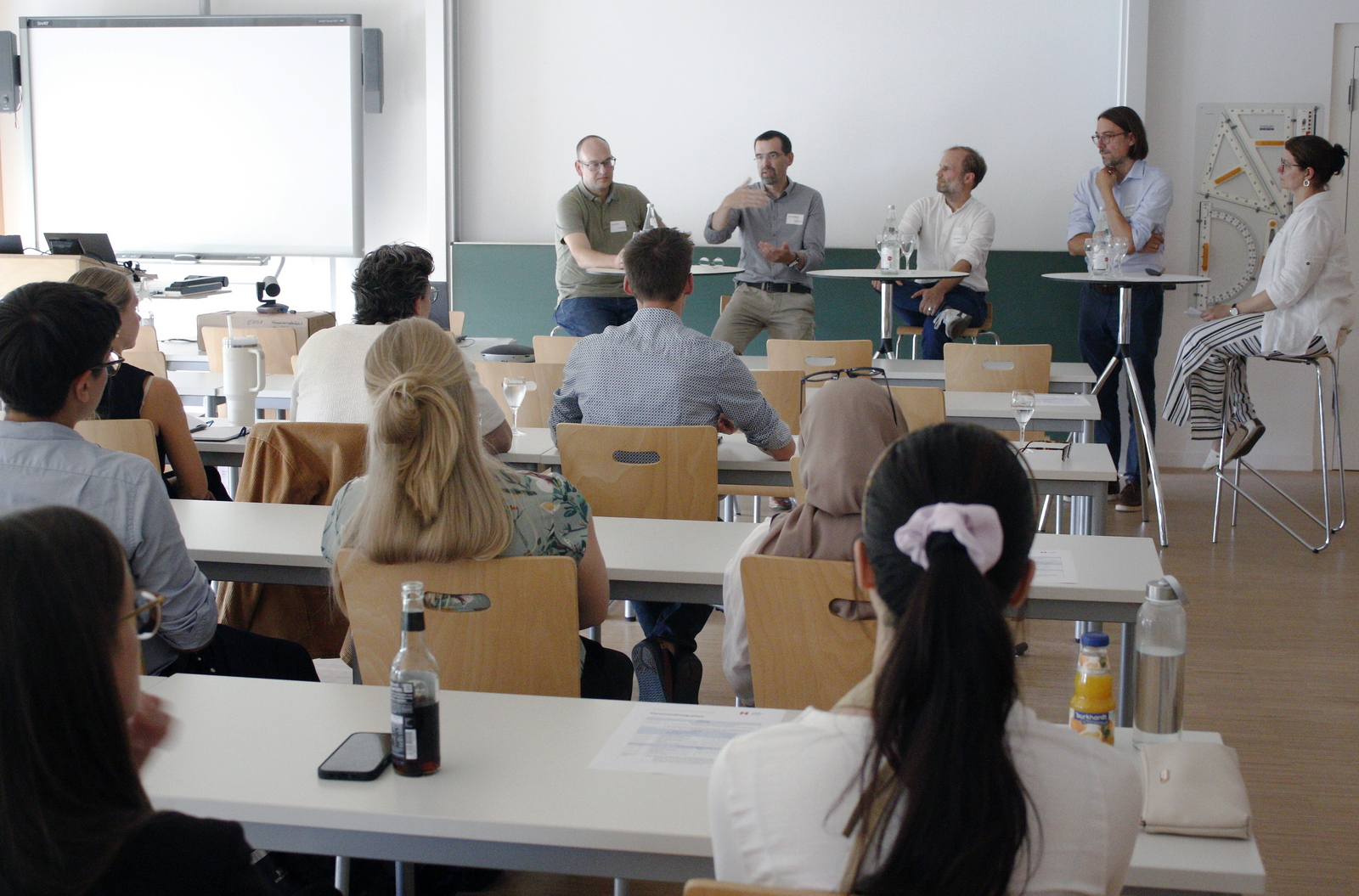In his welcoming remarks, the Vice Rector for Research and Transfer, Prof. Dr. Thomas Eisele, recalled the long and successful history of the Institute for Applied Research (Institut für angewandte Forschung, now Campus Research & Transfer, CRT) at Hochschule Offenburg (HSO). According to Eisele, it served as a model for many other universities and contributed significantly to the research strength of the professors at HSO. "And doctoral studies mean research, development, and innovation. Your doctoral research also leads to solutions for the challenges of our time, such as climate change," the Vice Rector emphasized the importance of the doctoral candidates' work.
Subsequently, Professors Janis Keuper, Peter Quadbeck, Marco Schneider, and Thomas Seifert discussed peer reviews on a panel moderated by Carmen Kuhn, the Head of the Graduate Academy at HSO. A Peer review is the standard process for ensuring the quality of scientific contributions before they are published in scientific journals. The professors agreed that doctoral candidates should write peer reviews, if only to better understand text structures and argumentation, as this enhances their own writing and doctoral research. They presented different forms of peer reviews and reported on their own experiences in reviewing. They also encouraged the doctoral candidates not only to submit their work to high-ranking scientific journals, but also to actively engage in the discourse and respond to the feedback.
But first, the twelve doctoral candidates presented the status of their doctoral research and thus their innovations from the fields of Smart Digitalisation, Sustainable Futures, and Health and Well-Being. Awaiting those listening both in person and online were diverse topics, such as
- Understanding Intergranular Fractures Using Digital Material Twins (Charleen Baumann),
- A New Shape-Adaptive Robot Gripper Using Magnetorheological Fluids and Additively Manufactured Cylinders (Jennifer Blöchle),
- Investigating Synergies and Trade-offs Between Negative Emission Technologies and Hydrogen for Enhanced Energy System Flexibility: A Quantitative Analysis (Meritxell Domènech Monfort),
- Valorization of insect-based chitin using enzymes (Héctor Alfonso Durán Guerra),
- Resilience in Times of Polycrisis: A Dynamic Capability Perspective on Strategy, Innovation, and Leadership in German SMEs (Alexander Gehringer),
- A Framework for Hydrogen Infrastructure Analysis in Regional Energy Systems (Philipp Guerra Nunez),
- Presentation of a Visual RAG Pipeline applied on Product Advertisements (Bianca Lamm),
- Optimising AI-Driven Solutions Without Trade-offs: Predicting and Preventing Potential Failures in Sustainable Innovation (Mas´udah),
- Is there such a thing as the perfect 400m runner? What biomechanics reveal about sprint endurance (Sebastian Rehorst),
- Asymmetric hearing provisions and the resulting challenges for spatial hearing (Sebastian Roth),
- Flexible, Climate-Friendly, Underestimated: Pyrolysis as a Key Technology by 2050 (Anna Sandhaas) and
- Digital Material Twins for Assessing Local Fatigue Damage in Duplex Steels (René Zandomeni).
The colloquium concluded with a musical performance by the HSO Jamband, featuring Thomas Binder, Bastian Czepl, Valentin Hallischafsky, Berkan Kayaer, Pascal Kušećek, Kacper Lubiński und Ralph Spielmann. Following the performance, attendees enjoyed a relaxed gathering with plenty of time to discuss the presentations and network with fellow doctoral students, professors, and audience members.



